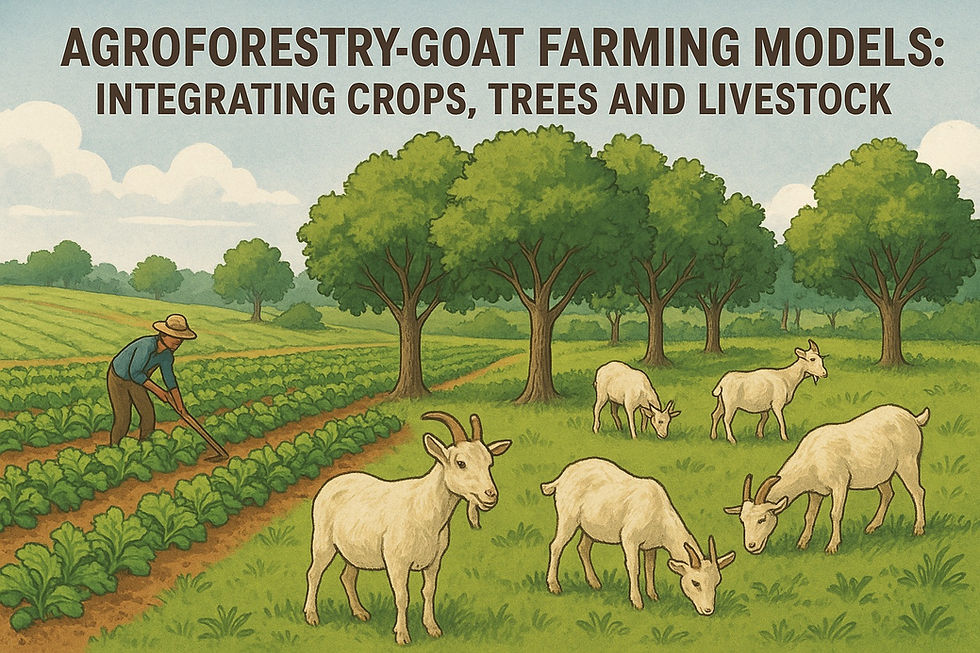The Gendered Economy of Goats and Poultry: Women, Livestock and Economic Change in India
- Global Services TGT
- Jun 17
- 2 min read
In India’s rural economy, small livestock such as goats and poultry play a vital but often under-recognized role. What is even more overlooked is the gendered dimension of this contribution. Women, particularly from marginalized and landless households, are the primary caretakers of small livestock. Their informal yet intensive involvement links directly to household nutrition, income diversification, and rural resilience. This article explores how small livestock enterprises change economics by shaping gender dynamics and contributing to economic change in rural India.
Goat and poultry are often referred to as “women’s livestock” because they require low investment, are easy to manage, and can be raised around the homestead. Unlike large livestock such as cattle or buffalo—which are often controlled by men—small ruminants and poultry tend to fall under the domain of women. This gives women a form of economic agency that is not dependent on land ownership or formal employment.
Key Features:
Low capital requirement and quick turnover.
High reproductive rates and resilience in poor
-climatic conditions.
Serve as a "bank on hooves"—easily liquidated in times of need.
Ownership and management of goats and poultry enhance women's economic autonomy. Women often control the proceeds from livestock sales, giving them financial resources to invest in household needs, children’s education, or savings. Studies have shown that when women generate income, it more directly contributes to improved family well-being than when men do.
Economic Benefits:
Regular income from egg, meat, and milk sales.
Micro-enterprise development, including value-added products like dried meat or poultry feed.
Strengthened bargaining power within households.
Women's role in livestock rearing directly influences household nutrition. Eggs, meat, and milk improve dietary diversity, especially for children and women. Since women often prioritize family consumption over market sales, the presence of poultry or goats often translates into better food security and health outcomes.
Despite their importance, several challenges limit the transformative potential of women's livestock ownership:
Lack of access to veterinary services, markets, and extension training.
Low visibility in policy and program frameworks, which often ignore small livestock or subsume them under general animal husbandry.
Cultural norms that restrict women's mobility or control over high-value livestock.
Recognizing the gendered dimensions of the small livestock sector is key to unlocking its full economic and developmental potential. Programs must:
Collect gender-disaggregated data on livestock ownership and contribution.
Empower women through training, veterinary support, and control over sales and profits.
Integrate small livestock in broader rural development and poverty alleviation strategies.
The goats and chickens in rural backyards are more than just animals—they are economic agents in the hands of women and in economic crises. When supported with the right tools, recognition and policy attention, small livestock can catalyze a quiet revolution in rural India—one that is sustainable, inclusive, and women-led.



Comments